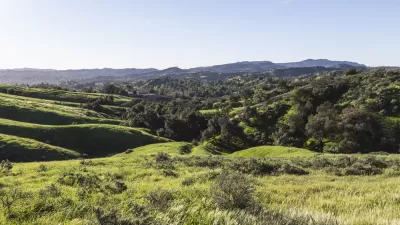I've always wanted, but never quite had the cred, to go to Burning Man. Instead, I went to this year's rendition of National Park(ing) Day in the hopes that it would provide a reasonable, if diminuative, substitute in temporary parks across the country. Creative minds can do a lot with 180 square feet, especially when there are straight-laced passers-by to shock and paradigms to subvert.
in the hopes that it would provide a reasonable, if diminuative, substitute in temporary
parks across the country. Creative minds can do a lot with 180 square
feet, especially when there are straight-laced passers-by to shock and
paradigms to subvert.
rather by an art collective, and there's something delicious about the marriage of art and asphalt. I imagine that many
of the over 400 events that took place last week (about double that of
last year) included all sorts of crazy stuff, in addition to more
mundane but well meaning patches of sod and picnic chairs. There were
probably DJs, acid trips, and naked fire eaters in San Francisco, where
Rebar founded the first event in 2005, and perhaps equal measures of whimsy took place at the two-dozen events in Los Angeles and New York (which is, as we know, the capital of the creative economy).

Tatlin's unbuilt Monument to the Third International in front of a Starbucks.)
despite its historic, pedestrian-friendly streetscape, the nation's tenth-largest
metro area had all of one Parking Day event. The venerable Trust for
Public Land helped coordinate the national Parking Day effort with a
list of cities and a handy map, and they were the official sponsor of
Boston's site, strategically located in front of what is generally
considered one of the most atrocious public spaces in all the United
States: Boston City Hall and its plaza, which is the most dehumanizing
expanse of pavement I've seen since Tienamen Square.

that their rendition in Boston was a bit too corporate. TPL saw fit to get permits and official police barriers
as would any regular group of demonstrators outside of City Hall, which
is all well and good. Their name is on the event, and they need to keep
the city happy (even while implicitly pointing out its shortcomings).But for most of the time I was there, the participants -- a pleasant bunch of students and urbanists -- outnumbered the onlookers. A scene, it was not.

reclaiming ugly spaces, or any public space, is that it doesn't have to be sanctioned, nor
should it priviledge only one kind of use. For the right number of
quarters, any citizen can lay claim to those 180 square feet -- for a
car, a park, or anything else -- without adhering to convention. To get Bostonians -- or most people, for that matter -- to
understand the potential to reclaim, redesign, and repurpose the urban
landscape into something a little more human is going to require
something a bit more revolutionary than sod, potted plants, and swapped
stories of compost and grad school.
Vladimir Tatlin had in mind, but it may yet require a revolution.

Maui's Vacation Rental Debate Turns Ugly
Verbal attacks, misinformation campaigns and fistfights plague a high-stakes debate to convert thousands of vacation rentals into long-term housing.

Planetizen Federal Action Tracker
A weekly monitor of how Trump’s orders and actions are impacting planners and planning in America.

In Urban Planning, AI Prompting Could be the New Design Thinking
Creativity has long been key to great urban design. What if we see AI as our new creative partner?

How Trump's HUD Budget Proposal Would Harm Homelessness Response
Experts say the change to the HUD budget would make it more difficult to identify people who are homeless and connect them with services, and to prevent homelessness.

The Vast Potential of the Right-of-Way
One writer argues that the space between two building faces is the most important element of the built environment.

Florida Seniors Face Rising Homelessness Risk
High housing costs are pushing more seniors, many of them on a fixed income, into homelessness.
Urban Design for Planners 1: Software Tools
This six-course series explores essential urban design concepts using open source software and equips planners with the tools they need to participate fully in the urban design process.
Planning for Universal Design
Learn the tools for implementing Universal Design in planning regulations.
Gallatin County Department of Planning & Community Development
Heyer Gruel & Associates PA
JM Goldson LLC
City of Camden Redevelopment Agency
City of Astoria
Transportation Research & Education Center (TREC) at Portland State University
Jefferson Parish Government
Camden Redevelopment Agency
City of Claremont






























